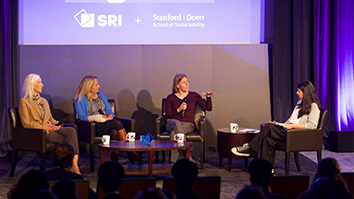Citation
Ruspini, E. H. (1991). On the semantics of fuzzy logic. International Journal of Approximate Reasoning, 5(1), 45-88.
Abstract
This note presents a formal semantic characterization of the major concepts and constructs of fuzzy logic in terms of notions of distance, closeness, and similarity between pairs of possible worlds. The formalism is a direct extension (by recognition of multiple degrees of accessibility, conceivability, or reachability) of the major modal logic concepts of possible and necessary truth.
Given a function that maps pairs of possible worlds into a number between 0 and 1, generalizing the conventional concept of an equivalence relation, the major constructs of fuzzy logic (i.e., conditioned and uncondition possibility distributions) are defined in terms of this generalized similarity relation using familiar concepts from the mathematical theory of metric spaces. This interpretation is different in nature and character from the typical, chance-oriented, meanings associated with probabilistic concepts, which are grounded on the mathematical notion of set measure. The similarity structure defines a topological notion of continuity in the space of possible worlds (and in that of its subsets, i.e., propositions) that allow a form of logical “extrapolation” between possible worlds.
This logical extrapolation operation corresponds to the major deductive rule of fuzzy logic —the compositional rule of inference or generalized modus ponens of Zadeh—an inferential operation that generalizes its classical counterpart by virtue of its ability to be utilized when propositions representing available evidence only match approximately the antecedents of conditional propositions. The relations between the similarity-based interpretation of the role of conditional possibility distributions and the approximate inferential procedures of Baldwin are also discussed.
A straightforward extension of the theory to the case where the similarity scale is symbolic rather than numeric is described. The problem of generating similarity functions from a given set of possibility distributions, with the latter interpreted as defining a number of (graded) discernibility relations and the former as the result of combining them into a joint measure of distinguishability between possible worlds, is briefly discussed.


